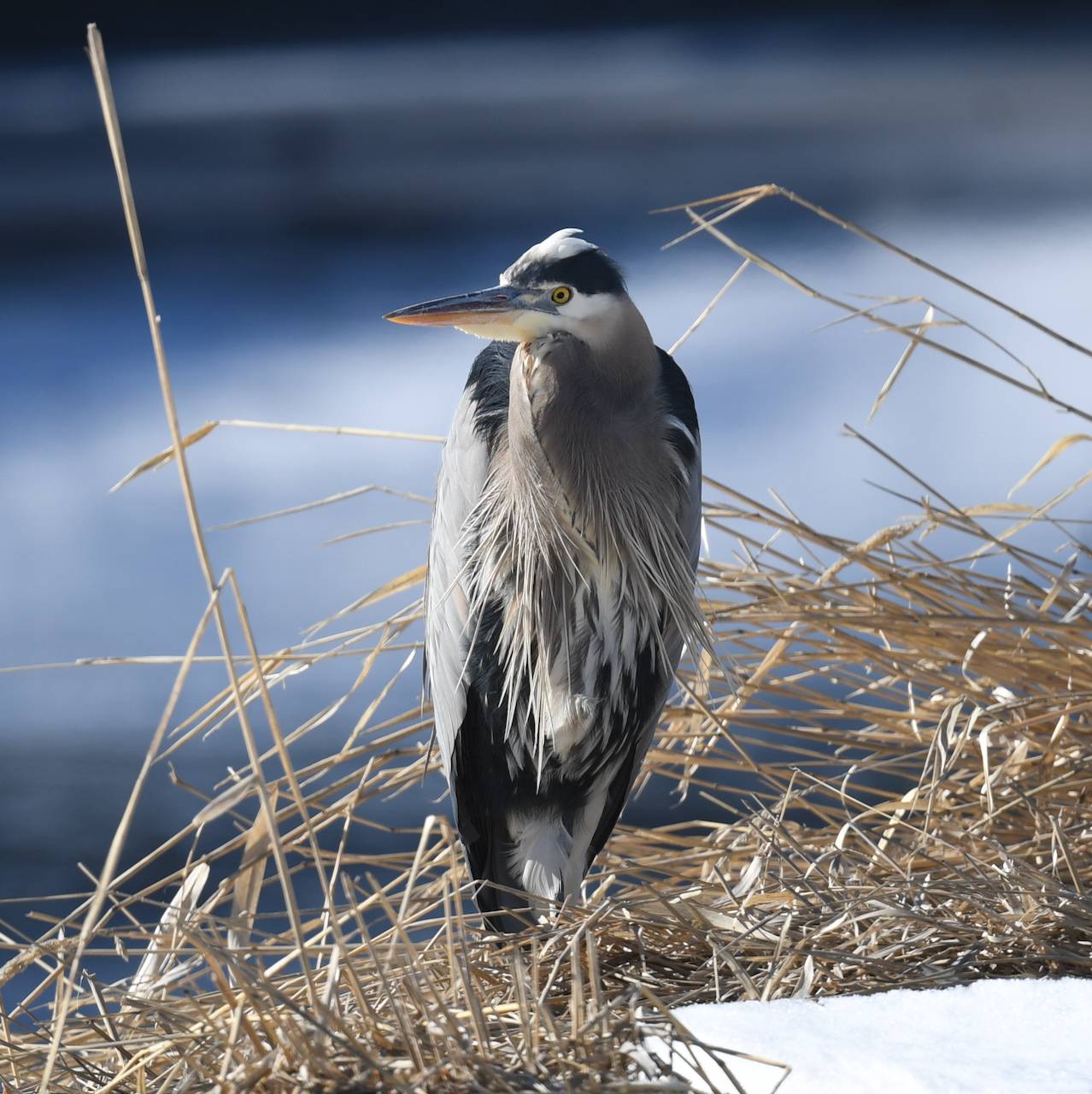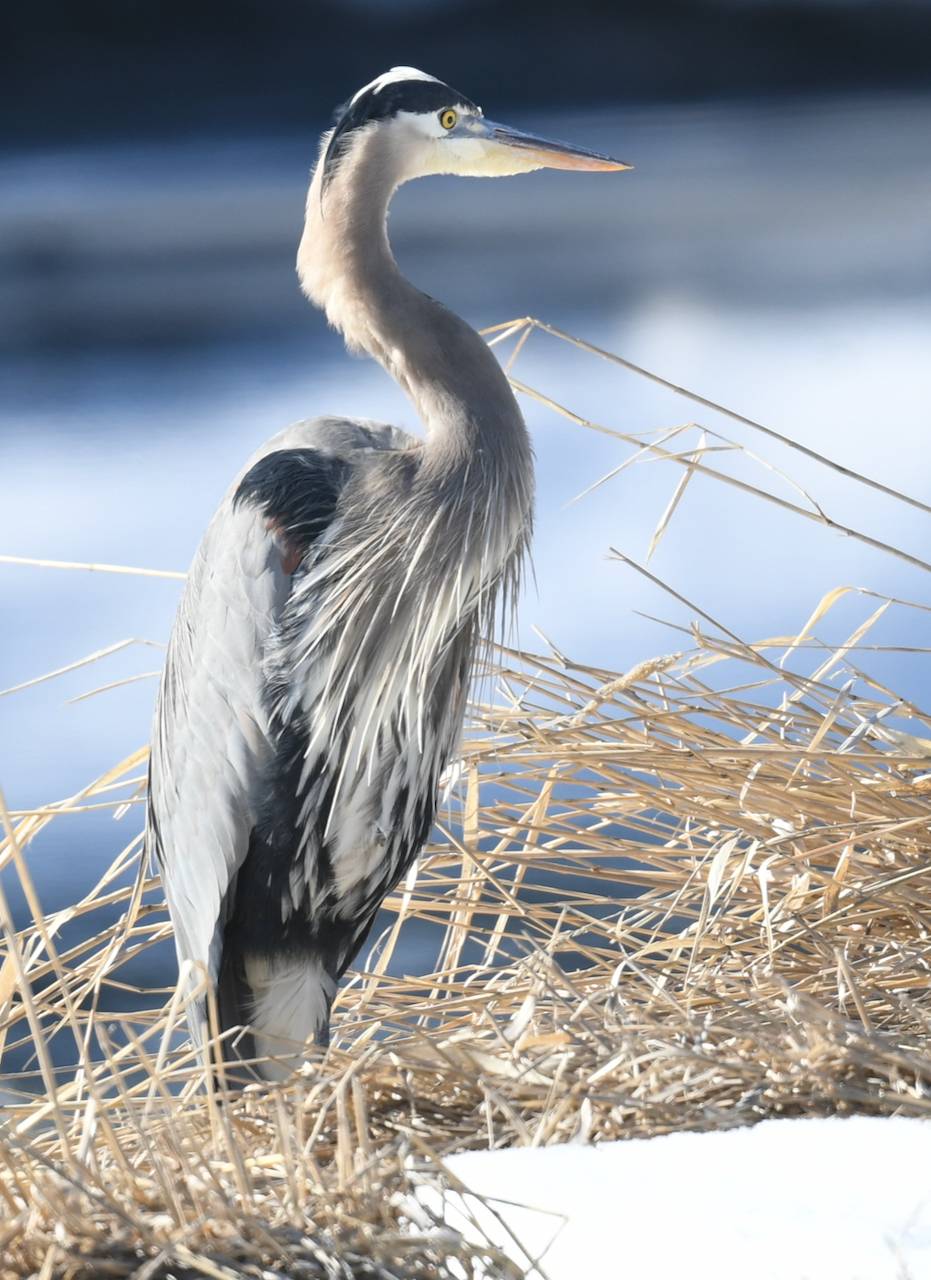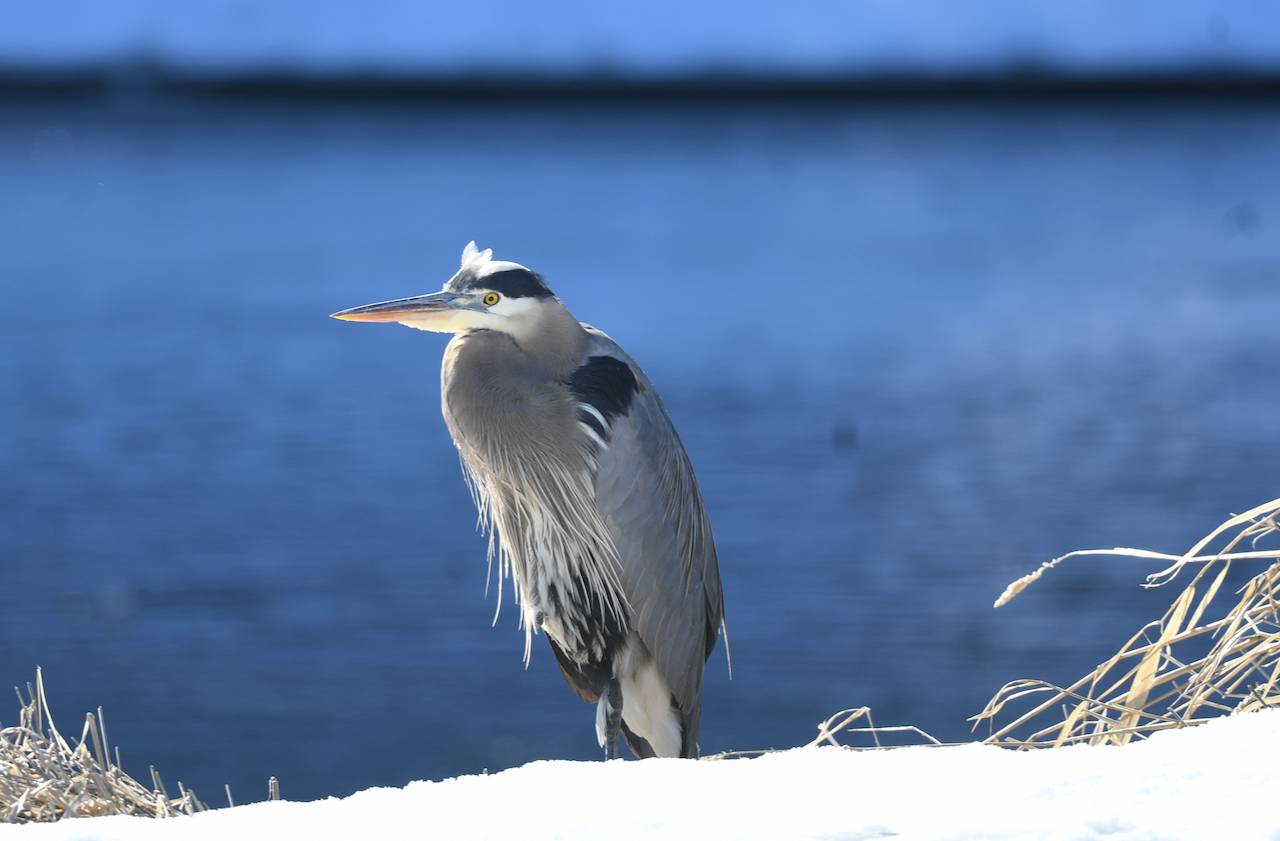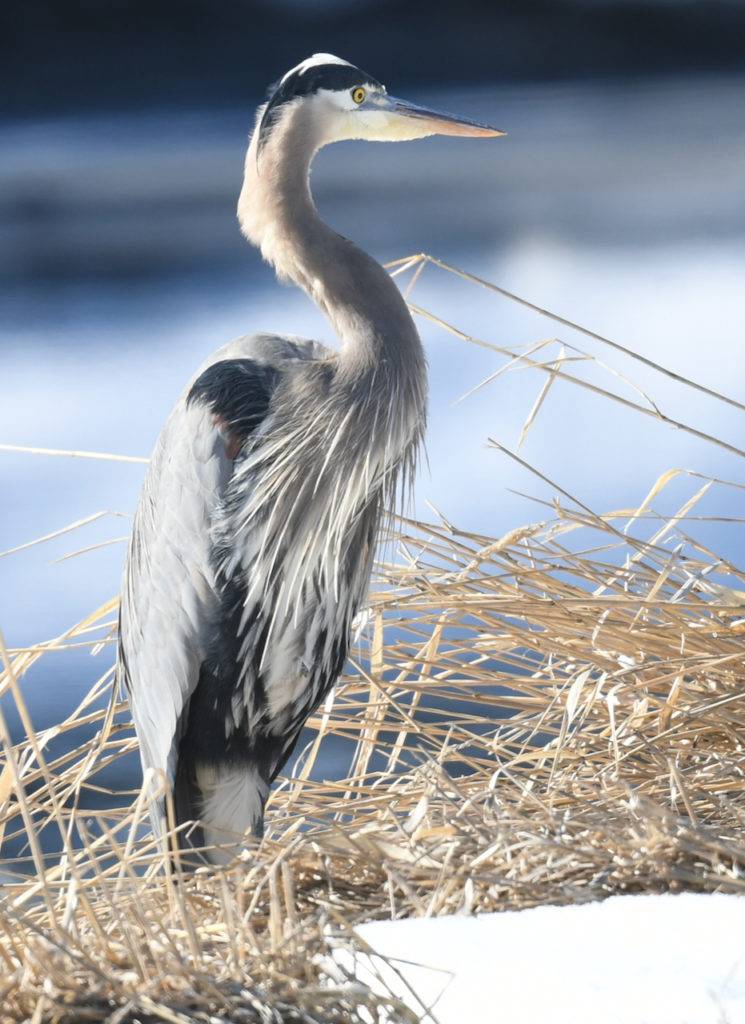(Ardea herodias)
By Sevilla Rhoads
Often described using words like majestic and stately, Great Blue Herons pose year-round on Sunriver’s waterways, meadows, and lakes. These long-legged, sharp-billed birds are often motionless, watching for prey like graceful sculptures. Sometimes their subtle gray and blue plumage melds perfectly with their surroundings, so you do not see them until suddenly either they plunge their bill downward with lightning speed to seize prey or, if disturbed, their over six-foot wingspan opens up as they lift off with a hoarse Jurassic-like call.
This pterodactyl-sounding call is particularly alarming if encountered at night. Not many people realize that Great Blue Herons can and do hunt at night as well as during the day. They have excellent night vision.
You may wonder how a heron, with such a long neck, can so quickly grab prey. They evolved unique neck bones that are like a powerful spring. These special vertebrae also allow the heron to fold its neck in some astonishing ways. If you come across one of these birds on a chilly winter day, you will likely see how they can tuck their necks so tightly into their chests that it seems like a magic trick when they unfurl. Their flexibility is most pronounced when you see them fly with zig-zag-shaped neck bends.



Notice those long, ragged-looking feathers hanging off the lower part of the neck? These plumage patches are another interesting evolutionary trait called ‘powder down’ feathers. Using a specially adapted frayed middle claw, herons crumble these feathers into a powder-like substance which they spread on their bellies to make it easier to clean off all the slime and oil from wading around in mucky places like wetlands. They can also wash their catch with this powder to remove unwanted muck, oil, or dirt. So, if you see a heron seeming to engage in a particularly complicated yoga pose with its foot in its neck feathers, now you know it is likely just making its own cleaning powder.
In addition to seeing well at night, Great Blue Herons have binocular vision with antiglare and precise depth perception features. A heron’s vision is about three times as detailed as ours, and they can zoom almost instantaneously between telescope and close-up mode. Many of us wish our bird photography cameras were half as good as herons’ eyes!
Often thought of as wading birds, herons actually enjoy a diet far beyond fish. Look around the Sunriver meadows and fields, and you well might see a heron stalking small mammals and snakes. They will even snack on a bird if it foolishly gets too close.
Sadly, almost seventy percent of fledged young herons die of malnutrition during their first winters because of how hard it is to learn effective heron hunting skills. If you notice a heron struggling to catch and eat prey, it may be a youngster, so give it some space to increase its chances of success. Juveniles have grayer heads and lack the white stripe of adults.
Herons can choke when trying to eat prey too large for their throats. Particularly around the Sunriver airport where sometimes four or more herons are out stalking voles, observe while they position a vole in their bills to swallow it whole safely. Also, while the heron is eating, notice around you in the trees and sky because you are likely not alone – eagles and other scavengers frequently take advantage of the heron’s swallowing challenges by stealing the prey before the heron can get it fully in its mouth. Mealtimes for herons can be quite an ordeal!
Even if learning to feed is hard, young herons are lucky to fledge at all because typically, one in three do not make it out of the nest. Great Blue Herons nest anywhere large enough to hold them but usually choose remote treetops. Some herons nest together in varying-sized colonies called heronries, and those chicks tend to have a better survival rate.
You may have noticed Sunriver has a number of Bald Eagles. Ornithologists think these eagles are the main heron chick predator, but ravens, owls, raccoons, and others also take chicks. This high nest attack rate is why Great Blue Herons rarely leave nests unattended during incubation. The males typically stay on the nests during the day, then they trade shifts with the female, who spends the night protecting the eggs. During the nesting season, look up around dusk to watch the heron commute because you are likely to see herons flying overhead for their shift change.
Some of the herons you see might be over fifteen years old. The oldest recorded heron, determined by a band, was twenty-four and a half. Interestingly, these large birds usually only weigh five pounds even when fully mature. Their bones are hollow, so they are much lighter than you would expect.
Great Blue Herons are native to most of North America, with some migrating to warmer areas in cold winters. There is a white heron in Florida about which there is debate as to whether it is a color variation or a separate species. If you see a white heron-sized bird around Sunriver, you are most likely fortunate enough to have spotted the less common egret. If you see a much larger heron-like bird in Sunriver, you were extra lucky because it could be a crane. If you see a crane, consider calling in a report to the Nature Center because so few are seen here.
While Great Blue Herons are common, we never take them for granted because they were one of the species threatened by the plume trade in America between 1840 and World War I. During that period, the demand for heron and egret feathers for women’s hats caused the killing of millions of herons. The Great Blue Heron’s breeding plume was particularly sought after by hunters. At the height of this fashion trend, heron plumes were worth three times more than gold. While the plume trade bird slaughter is a tragic period in American history, the story of the conservation effort that ended that trade is truly inspiring. For example, see https://www.npr.org/sections/npr-history-dept/2015/07/15/422860307/hats-off-to-women-who-saved-the-birds.

How to identify a Great Blue Heron
Standing up to four and a half feet high, the Great Blue Heron sports a wingspan of up to six and a half feet. The coloring is blue and gray overall, tinged a mauve-brown on the back, legs, neck and belly. It has a large pointed bill which often appears gray on top and orange-yellow or gray underneath. The head is usually white on the cheek, the chin, and around the eyes with black above the white. Sometimes there are chestnut-colored patches on the shoulders and the outer edges of the wings. However, sometimes only black patches are visible in those areas.
Usually, the chest shows some, often ragged-looking, long plumes hanging off the front of the bird. The eye is yellow but can appear more reddish in the breeding season. In adults, there can be a white streak on the top of the head and breeding males have a plume coming off the back of the head. The legs are more reddish-brown in breeding adults.
For more information see: https://ebird.org/species/grbher3/US-OR-017
